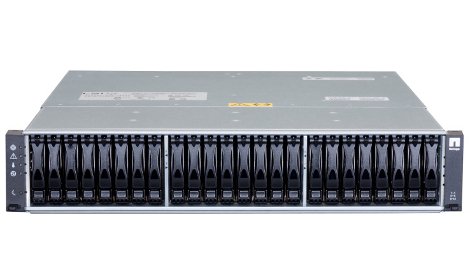NetApp rolled out a new all-flash storage array for its EF product family Tuesday, increasing performance and more than doubling storage capacity from the previous model.
The new EF550 array performs about 400,000 input/output operations per second (IOPS) and stores up to 96 terabytes of data. Its predecessor EF540 went through about 300,000 IOPS and could store up to 38TB.
“There's just a whole bunch of performance you get in a really small form factor,” Brendon Howe, VP and general manager at NetApp, said about the new array. One 2U chassis can be packed with 24 flash drives.
NetApp is competing with both traditional big IT vendors, such as EMC, Dell, HP and IBM, for market share in the growing all-flash array market, and with startups, such as Violin Memory, Nimbus Data, Kaminario and a few others.
The vendor's strategy for competing with these players in the category is focusing on a rich set of management and availability features, Howe said. Its management tools include things like monitoring, dynamic storage pools and configuration management.
NetApp is pitching the new all-flash array for latency sensitive applications, such as databases, web services and virtual desktop infrastructure, among others.
The vendor is promising lower operational costs for the all-flash product compared with disk arrays because of reduced overprovisioning if data center resources. A single EF550 can match the performance of two full racks of traditional spinning-disk drives, according to NetApp.
Along with announcing the EF550, NetApp also unveiled new products in its E-series family: E2700 and E5500 arrays designed for SAN (storage area network) environments. These are geared for high-performance, high-density, data-intensive workloads, such as high-performance computing (HPC) or big data analytics.
All three new products run NetApp's SANtricity storage operating system.
The arrays announced Tuesday fall in one of two general categories NetApp is focused on – the dedicated infrastructure for specific applications, Howe said. The other category is infrastructure for shared consolidated environments – a category addressed by the company's DataOnTap operating system.
Both categories include flash and performance acceleration components. NetApp says it has shipped about 60 petabytes of flash storage to date.

